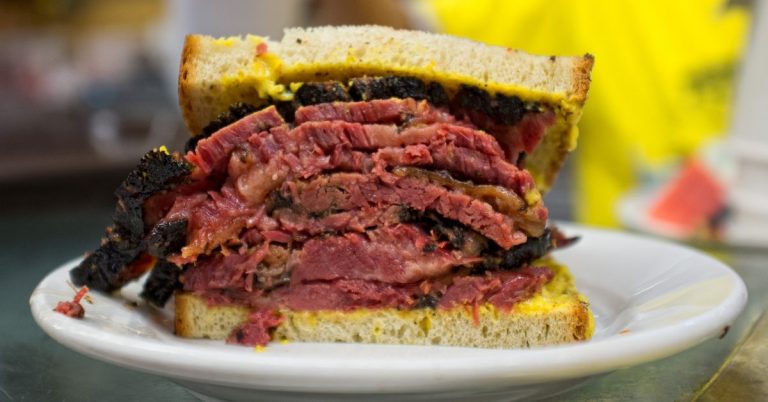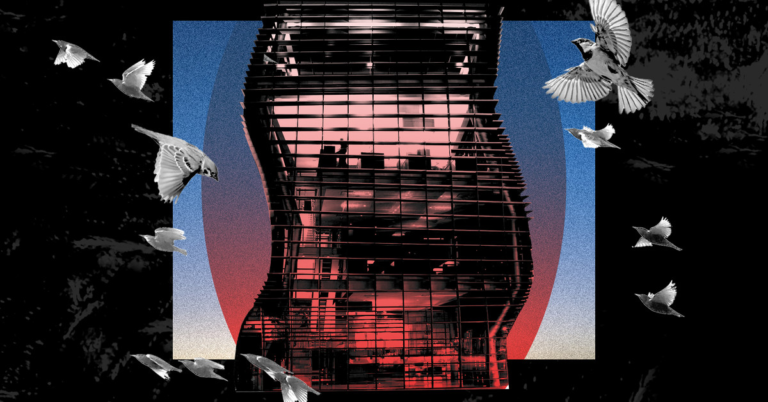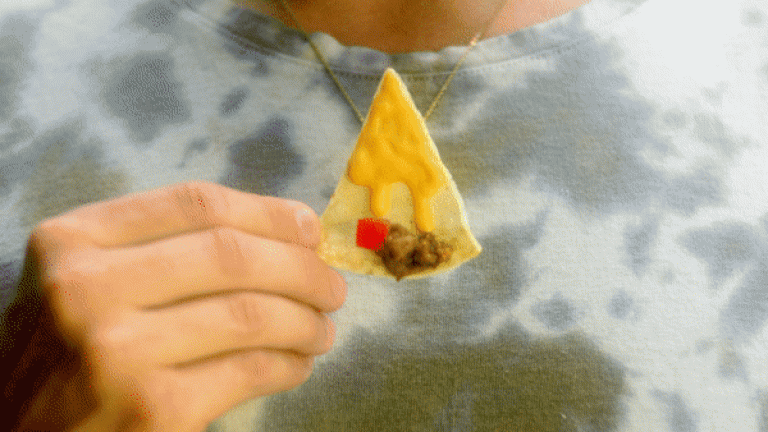Eater’s Guide to the Canadian Rockies
The Canadian Rockies take everything up a notch. Over the course of 1,000 miles from the U.S.-Canada border in Montana to northern British Columbia, the jagged peaks look like layer cakes of snow, ice, and fossil-studded 100-million-year-old limestone and shale. As the mountains wind their way up along the border between Alberta and British Columbia, lakes sparkle in shades of aquamarine and turquoise, torrential rivers surge down from lofty icefields into deep valleys, and lush evergreen conifer and larch forests hug the roadsides. This protected land is a UNESCO World Heritage Site, the birthplace of the Canadian national park system, and some of Mother Nature’s finest work.
To pair with all this natural splendor, there’s equally dazzling Canadian Rocky Mountain cuisine. The area is home to wild game like elk, venison, and bison as well as trout-filled rivers, along with abundant mushrooms, Saskatoon berries, and herbs. First Nations groups like the Tsuut’ina prospered in the dramatic alpine environment. In the 19th century, the Canadian Pacific Railway brought European food cultures and grand lakeside hotels. And most recently a locavore, mountain-to-table food movement has built on these overlapping historical influences and endemic Rocky Mountain ingredients to create bold meals fit for the breathtaking setting.
The region has long been an outdoorsy playground for thrill-seekers (from kayakers in the summer to dog sledders in the winter), but its food and drink scene is finally drawing the attention of adventurous eaters. Especially since the founding of local culinary festival Canmore Uncorked in 2014, chefs have shined a spotlight on regional dining, tempting travelers to pop over from nearby Calgary or Edmonton, or cross the reopened border from the U.S. Visitors are discovering what the area’s original First Nation inhabitants and farmers markets regulars know well: The Canadian Rockies offer incredible bounty.
:no_upscale()/cdn.vox-cdn.com/uploads/chorus_asset/file/23264041/Banff_Winter___Credit__Paul_Zizka.jpg)
What is Rocky Mountain Cuisine?
As the Canadian Pacific Railway cut across the Rockies in the late 1800s, First Nations and European food cultures started to blend. Chefs on board the trains — and at the grand hotels, like the Fairmont Chateau at Lake Louise and Fairmont Banff Springs, that the trains precipitated — introduced lavish Victorian fine dining. European mountaineering guides also brought dishes from their homelands, like fondue. As the vast, fertile plains of the Alberta province became a farming and agricultural powerhouse, grains like wheat, barley, and canola, as well as the region’s internationally renowned beef, also joined the roster of signature local foods. Although erasure and government-sanctioned assimilation policies have largely buried First Nation contributions to the food culture, their influence remains in the farm-to-table practices of chefs, restaurateurs, bakers, distillers, foragers, and brewers today.
The unique, hyper-regional flavors of the Canadian Rockies and the nearby Alberta prairies are the main draw for dining in the region’s mountain towns and remote backcountry lodges. You’ll also find plenty of other international cuisines represented, especially Germanic and European alpine. Despite the strong meat focus, there are some great vegan and vegetarian options. Thanks to Alberta’s bountiful grain fields and an endless supply of fresh water from glaciers, icefields, and snowmelt, the Canadian Rockies also has its own cottage industry of hip, independent craft breweries, as well as trendy distilleries incorporating native botanicals into heady spirits. And yes, you can also get your fill of beloved Canadian chains like Tim Hortons and BeaverTails, and quintessential Great White North dishes like poutine.
:no_upscale()/cdn.vox-cdn.com/uploads/chorus_asset/file/23264353/Fairview_Lounge_Lamb_Horz.jpg)
:no_upscale()/cdn.vox-cdn.com/uploads/chorus_asset/file/23264359/Fairmont_Banff_Springs___Afternoon_Tea___Lux_Detail.jpg)
What to know before you go
The parks: Most of the culinary attention in the Canadian Rockies centers around a cluster of the best known parks at the southern end of the mountains. Covering 9,112 square miles, the national parks of Banff, Jasper, Yoho, and Kootenay, and the provincial parks of Mount Robson, Mount Assiniboine, and Hamber received over 9 million visitors a year pre-pandemic. With its low light pollution, Jasper also boasts of the second-biggest Dark Sky Preserve in the world.
Canmore Uncorked: Set to return in 2022, this award-winning springtime food and drink festival in Canmore, the “gateway to the Rockies” town on the outskirts of Banff National Park, celebrates the chefs, brewers, distillers, and bakers of Canmore and the Bow Valley. Highly anticipated signature events include the multi-course Long Table Dinners, where guests find a spot among a hundred dining companions, and Progressive Dinner Tours, which treat guests to specialties at multiple restaurants over the course of an evening.
Watch for wildlife: Grizzly bears, black bears, elk, bighorn sheep, deer, and other wildlife roam free on the protected lands, and you are the guest in their territory. When hiking, practice bear safety protocols, and keep an eye out for animals around resorts, in towns, and while driving along the Trans-Canada Highway (though well-maintained fences and wildlife overpasses generally keep the roads free).
The Boss: If you hear locals talking about someone called the Boss, they’re not talking about Bruce Springsteen. The Boss is Banff’s most famous bear, a massive 600-plus pound grizzly, whose size and stature have made him so popular. He’s survived being hit by a train, fathered numerous offspring, and has been known to eat the occasional black bear. The railroad tracks around Banff are a favorite haunt of his.
Après-ski: Powderhounds of all skill levels, from pizza-french-fry beginners to black-diamond experts, love skiing here for the multilevel terrain, scenic vistas, lengthy ski seasons, and lively après-ski culture. The ski resorts at Lake Louise, Banff Sunshine Village, and Mt. Norquay form the SkiBig3 trifecta, which dominates the local skiing scene.
Seasons: The Canadian Rockies are an all-year destination. Park visitors enjoy hiking, cycling, canoeing, kayaking, mountaineering, and navigating via ferratas in summer; and skiing, snowboarding, snowshoeing, ice skating, dog sledding, and ice climbing in the winter. But not all hotels, restaurants, and attractions stay open year round. Be sure to confirm that your desired restaurants and hotels will be open before booking.
Icefields Parkway: Set time aside to drive this 144-mile highway from Lake Louise to Jasper, considered one of the most scenic routes in the world. You’ll pass mountains, lakes, waterfalls, rivers, forests, glaciers, and hopefully wildlife, and you can stop along the way at famous viewpoints like Peyto Lake, which is shaped like a dog’s head.
Rocky Mountaineer: One of the best ways to experience the Canadian Rockies is onboard the Rocky Mountaineer. With several different routes all originating in Vancouver, the multi-day train ride into the heart of the Rockies comes with a standout gourmet dining program featuring seasonal flavors and ingredients from British Columbia and Alberta, and unobstructed views of the mountains, thanks to the glass ceiling observation cars.
:no_upscale()/cdn.vox-cdn.com/uploads/chorus_asset/file/23264066/Lake_Louise___Credit__Paul_Zizka.jpg)
Where to eat
Canmore: Before heading into the Bow Valley, stop at the Nakoda First Nation-owned Stoney Nakoda Resort & Casino, whose menu uses traditional First Nation foods like elk, bannock, and Saskatoon berries. Then visit speciality food purveyor Valbella Gourmet Foods, which has been keeping the Bow Valley stocked with big game, processed meats, and European-style charcuterie since 1978. Grab some venison pate, bison sausage, and other artisan treats, or maybe one of their extensive to-go boxes, like the grass-fed bison box with steak, sausage, osso bucco, and ribs. To learn more about local herbs and plants, go on an educational plant walk with the Indigenous-owned and -operated Mahikan Trails.
Banff: Located next to the spot that once housed Banff’s first bakery in the late 1800s, Wild Flour Bakery carries on the sourdough tradition with fresh-baked organic breads and pastries. Start the day with a cup of locally roasted coffee and a comforting baked good. For rarefied campfire cooking, sample Farm & Fire’s wood-fired, farm-to-table, modern Canadian fare — like sizzling tomahawk steaks and flatbreads heaped with wild mushrooms. For a classic steakhouse experience, head to Saltlik for some of the juiciest Angus beef in town. Housed in a charming Bavarian cottage, the Waldhaus Restaurant at the Fairmont Banff Springs whisks you from Canada to the European Alps with its crispy schnitzel and decadent fondue. For a meal with a view, dine at the Juniper Hotel’s valley-view Bistro or head up the Banff Gondola to Sulphur Mountain’s Sky Bistro for seasonal specialties like elk Bolognese and foraged mushroom porridge, paired with a curated drinks menu of Canadian wines, local ales, and craft cocktails featuring local spirits.
Lake Louise: The house specialty in Walliser Stube — the intimate, dark-wood-paneled alpine restaurant at Lake Louise’s Fairmont Chateau — is rich, indulgent fondue with all the fixings, best enjoyed with something from the 500-plus bottle wine list. The fondue is prepared with gruyere, emmental, appenzeller, and white wine, and you can zhuzh it up with foraged black truffles or Nova Scotia lobster. Located inside a disused historic train station, the Station Restaurant blends fine dining and railway history with local ingredients, for both European-influenced dishes like schnitzel burgers as well as homegrown items like succulent Alberta beef short ribs.
Rocky Mountain House: While a bit off the beaten path, this small town is worth a detour to pick up a “Hunter Gatherer Graze” box from Creative Cuisine Catering, owned and operated by Indigenous chef Denia Baltzer. The to-go charcuterie selection is inspired by Canada’s First Foods (the ingredients of First Nations inhabitants), including venison and bison sausage, Alberta fireweed jelly, Saskatoon chutney, indigenous honey, and bannock. Grab a box for a trailside picnic.
Jasper: Jasper’s lively food scene ranges from haute cuisine to laid-back pubs. For a great introduction, take a walking and eating tour to sample a rotating selection of popular local dishes and drinks with Jasper Food Tours. Opened in 1952, regional favorite Tekarra offers hearty, adventure-ready meals rooted in local, seasonal ingredients, all served inside a quaint, chalet-esque cabin on the grounds of the Tekarra Lodge. The bison short ribs, rainbow trout, and elk meatloaf (prepared with elk, wild boar, bison, and forest mushrooms) are all crowd pleasers.
:no_upscale()/cdn.vox-cdn.com/uploads/chorus_asset/file/23264133/edited_2.jpg)
:no_upscale()/cdn.vox-cdn.com/uploads/chorus_asset/file/23264125/Banff_Ave_Brewing_Co___Credit__Meghan_McMaster.jpg)
Where to drink
Canmore: Canmore Brewing Company’s lineup of pale ales, lagers, stouts, and IPAs, as well as seasonal sours and Belgian witbiers, are named after local landmarks like mountains and hiking trails. Featuring a constantly rotating tap list, Sheepdog Brewing features fun beer styles like saison and German-style Hefeweizen. With the aid of foraging tour operator Full Circle Adventures, Wild Life Distillery utilizes sustainably foraged summertime botanicals like Rocky Mountain juniper, Labrador tea, and rose hips to flavor their one-of-a-kind Alberta botanical gin.
Banff: The Banff Ave Brewing Co. is a cozy gastropub and tasting room where housemade brews like the rich Mt. Rundle stout and blonde ale pair with hearty fare like poutine and bison burgers. The woodsy Three Bears Brewery and Restaurant brings the outdoors in with forest-inspired dining rooms. There’s also a beer garden, where you can enjoy signature microbrews like the Boss, a chocolatey brown ale named after Banff’s favorite bear, or the golden Pinery pilsen made with Alberta malted barley. Giant draughts of Rockies microbrews can be found at the hip High Rollers bowling alley, while the moody Rundle Bar at Fairmont Banff Springs is a bastion of the local craft cocktail scene. Grapes and the Three Ravens Restaurant and Wine Bar have you covered with wine lists featuring both Canadian and international vintages.
With an award-winning range of small-batch, artisan gins, vodkas, ryes, and experimental aged whisky, Banff’s Park Distillery is the only distillery inside a national park in Canada. Their glacier-to-glass spirits are made using limestone-enriched glacial water and high-altitude Alberta grain. Their London-style dry gin, flavored with Canadian spruce tips, is one of their most popular creations, alongside a rye flavored with Quebec maple syrup.
:no_upscale()/cdn.vox-cdn.com/uploads/chorus_asset/file/23265803/Rundle_Bar___Lower_Rundle.jpg)
Lake Louise: The bars at the Fairmont Chateau Lake Louise are popular après-ski spots for ski bums to unwind. Delivering on its name, Lakeview Lounge has the best seat in the house, with a terrific view out onto the lake. The Art Deco-inspired Fairview Bar, meanwhile, is a cozy hideaway for a nightcap, with sumptuous decor and elegant cocktails with playful names like Fairytale in Lake Louise and Arctic Reindeer. Finally, Alpine Social’s decor pays tribute to the regional history of mountaineering. Warm up with their signature Untamed rye, made in partnership with Park Distillery. As if three bars weren’t enough, every winter an entire ice bar is hewn from ice out on the lake, and it serves mulled wine and winter-inspired cocktails.
Golden: Take a trip through Yoho National Park to try Whitetooth Brewing Co’s Belgian-inspired, West Coast-influenced witbier, stout, and pale ale beers.
Jasper: At Jasper Brewing Co, opened in 2005, you’ll get to drink a microbrew at the first brewery in a Canadian national park. The trademark creations include the fruit-forward Trail Session IPA and a robust 6060 stout. They’re equally good enjoyed with elk meatloaf or poutine at their brewpub, or out on the trail in cans. On the edge of the national park, Folding Mountain Brewing Taproom and Kitchen serves imperial stouts, hazy IPAs, lagers, sours, and porters with great views. Warming stouts, brown ales, crisp IPAs, and amber ales can be found at Three Ranges Brewing Co near B.C.’s Mount Robson Provincial Park.
Where to stay
Fairmont Banff Springs
First opened in 1888, the Fairmont Banff Springs feels like something out of Beauty and the Beast. With stately towers and steep-pitched gable roofs, the hotel rises dramatically out of the forest on the southern edge of town, overlooking the Bow River. The hotel has 764 rooms and 12 restaurants and bars, as well as a spa, summertime golf course, and childcare. If you’re staying here, take the Eat the Castle tour with Alberta Food Tours, which visits a handful of the castle’s eateries to sample house-made (or rather castle-made) seasonal specialties with curated beverage pairings. Just try not to sing “Be Our Guest” in your head the whole time. Prices start around $325.
Fairmont Chateau Lake Louise
One of the grand, palatial hotels built by the Canadian Pacific Railway to encourage tourism in the late 1800s, the elegant 539-room Fairmont Chateau at Lake Louise overlooks glacier-fed, aqua waters. The place has six bars and restaurants, and guests can enjoy the spa, canoe on the lake, hit the slopes, and hike to the historic Agnes Teahouse high in the mountains. Come winter, the lake completely freezes over, setting the stage for ice-skating and an epic ice sculpture contest. Rooms start at $510.
:no_upscale()/cdn.vox-cdn.com/uploads/chorus_asset/file/23264351/LAKE_LOUISE_ICE_BAR.jpg)
Mount Royal Hotel
This stylish boutique hotel with rooms starting around $100 a night, conveniently located on Banff’s main drag, is within walking distance of the bulk of Banff’s dining, shopping, and mass transit. With 133 rooms, guests have access to a cozy lounge, general store, and on-site food and drinks at the Cascade Bar. The best part of staying here is enjoying the rooftop hot tubs, where you can soak while soaking up views of Cascade and Sulphur Mountain.
Glacier View Lodge
Instead of birdsong outside your window when you wake up, here you may hear the creaks and pops of a moving glacier. Located by the Icefields Parkway in Jasper National Park, the luxe Glacier View Lodge has a front-row seat to the Athabasca Glacier, a 10,000-year old giant that’s open to the public for walking tours. With two on-site restaurants, a majestic glacier-view lounge, and minimalist rooms, the lodge offers exclusive packages that include private glacier tours without the crowds. With prices starting at $427 CAD per night for double occupancy ($335 USD), the resort is closed from mid-October to mid-April due to snowfall.
Emerald Lake Lodge
One of Yoho National Park’s few hotels, the remote Emerald Lake Lodge elevates the typical log cabin retreat with its rustic-chic decor, digital detox ethos, gourmet culinary program, and top-of-the-line bar. Situated on a peninsula in Emerald Lake, the 24 guest cabins come with cozy features like wood-burning fireplaces and private wrap-around lakeview balconies. In the main lodge with its rough-hewn wood and stone fireplaces, you’ll find the renowned Mount Burgess Restaurant, where chef Valerie Morrison serves free-range local meats like elk, bison, and caribou with seasonal sides. Take in local history — and some high-end scotch — at the Kicking Horse Lounge, whose bartop dates to the 1890s. In the low season, rooms start at around $100 a night.






